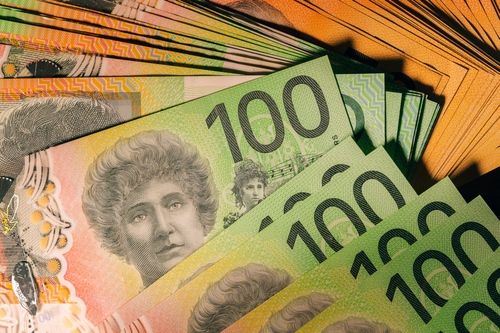Australian Dollar remains tepid as US Dollar appreciates following a surge in US yields

The Australian Dollar declines as the US Dollar gains ground due to rising risk aversion.
The hawkish sentiment surrounding the RBA could limit the downside for the AUD.
2-year and 10-year US yields stand at 4.02% and 4.19%, respectively.
The Australian Dollar (AUD) stayed weak against the US Dollar (USD) on Tuesday, as the AUD/USD pair struggled following a surge in US Treasury yields, which rose over 2% on Monday. This increase was driven by signs of economic strength and concerns about a potential resurgence of inflation in the United States (US).
The downside risk of the Aussie Dollar could be restrained due to rising hawkish sentiment surrounding the Reserve Bank of Australia (RBA) regarding its policy outlook, bolstered by positive employment data from Australia. Additionally, the AUD found support from China's recent rate cuts, given that China remains Australia’s largest trading partner.
The US Dollar gained strength as recent economic data dispelled the likelihood of a bumper rate cut by the Federal Reserve (Fed) in November. According to the CME FedWatch Tool, the likelihood of a 25-basis-point rate cut in November is 89.1%, with no expectation of a larger 50-basis-point cut.
Traders await the Purchasing Managers Index (PMI) reports from both the US and Australia, set to be released on Thursday. These reports could provide insight into the health of each economy and influence future monetary policy decisions.
Daily Digest Market Movers: Australian Dollar declines due to rising risk aversion
2-year and 10-year yields on US Treasury bonds stand at 4.02% and 4.19%, respectively, at the time of writing.
On Monday, Federal Reserve Bank of Minneapolis President Neel Kashkari highlighted that the Fed is closely monitoring the US labor market for signs of rapid destabilization. Kashkari cautioned investors to anticipate a gradual pace of rate cuts over the coming quarters, suggesting that any monetary easing will likely be moderate rather than aggressive.
Federal Reserve Bank of San Francisco President Mary Daly stated that while she expects the Fed to lower interest rates over the coming quarters gradually, the central bank remains committed to a data-driven approach.
RBA Deputy Governor Andrew Hauser addressed the CBA 2024 Global Markets Conference in Sydney on Monday, expressing slight surprise at the strength of employment growth. Hauser noted that the labor participation rate is remarkably high and emphasized that while the RBA is data-dependent, it is not data-obsessed.
The People's Bank of China (PBoC) reduced the 1-year Loan Prime Rate (LPR) to 3.10% from 3.35% and the 5-year LPR to 3.60% from 3.85%, in line with expectations. Lower borrowing costs are anticipated to stimulate China's domestic economic activity, potentially increasing demand for Australian exports.
National Australia Bank revised its projection for the Reserve Bank of Australia (RBA) in a note last week. "We have brought forward our expectations for the timing of rate cuts, now anticipating the first cut in February 2025, instead of May," the bank stated. They continue to foresee gradual cuts, with rates expected to decrease to 3.10% by early 2026.
US Retail Sales rose by 0.4% month-over-month in September, surpassing the 0.1% gain recorded in August and market expectations of a 0.3% increase. Additionally, US Initial Jobless Claims fell by 19,000 during the week ending October 11, the largest decline in three months. The total number of claims dropped to 241,000, significantly below the anticipated 260,000.
The seasonally adjusted Employment Change in Australia surged by 64.1K in September, bringing the total employment to a record 14.52 million. This far surpassed market expectations of a 25.0K increase, following a revised rise of 42.6K in the previous month. Meanwhile, the Unemployment Rate remained steady at 4.1% in September, matching the revised figure for August and coming in lower than the anticipated 4.2%.
Technical Analysis: Australian Dollar drops to near 0.6650, eight-week lows
The AUD/USD pair trades around 0.6660 on Tuesday. Technical analysis of the daily chart shows the pair below the nine-day Exponential Moving Average (EMA), indicating a short-term bearish outlook. Furthermore, the 14-day Relative Strength Index (RSI) remains below 50, reinforcing the bearish sentiment.
On the downside, the pair could test its eight-week low of 0.6622, last reached on September 11, followed by the psychological level of 0.6600.
Resistance may come from the nine-day EMA at 0.6700, followed by the 50-day EMA at 0.6734. A break above this level could open the door for a move toward the psychological resistance of 0.6800.
AUD/USD: Daily Chart
* The content presented above, whether from a third party or not, is considered as general advice only. This article should not be construed as containing investment advice, investment recommendations, an offer of or solicitation for any transactions in financial instruments.




